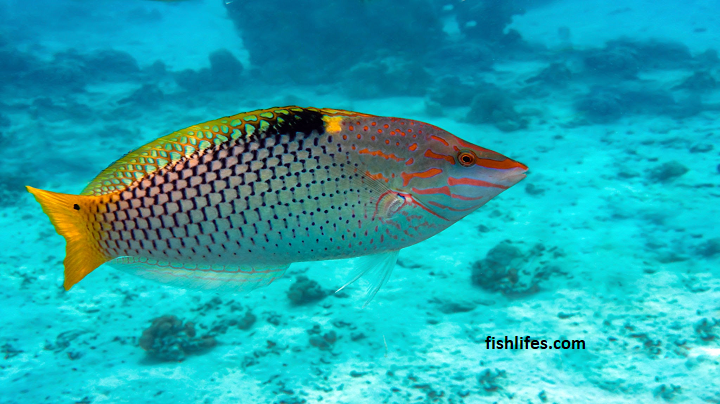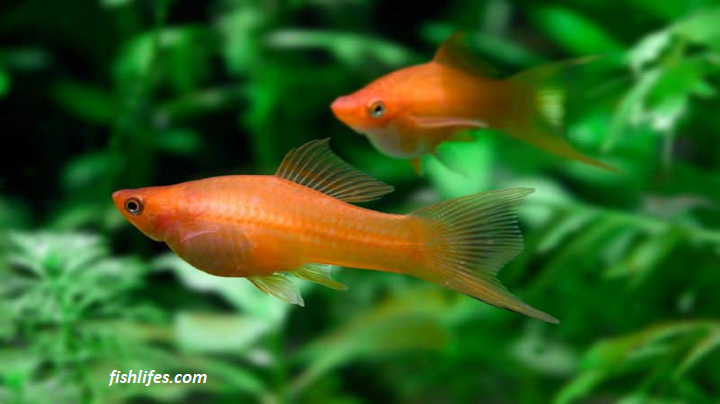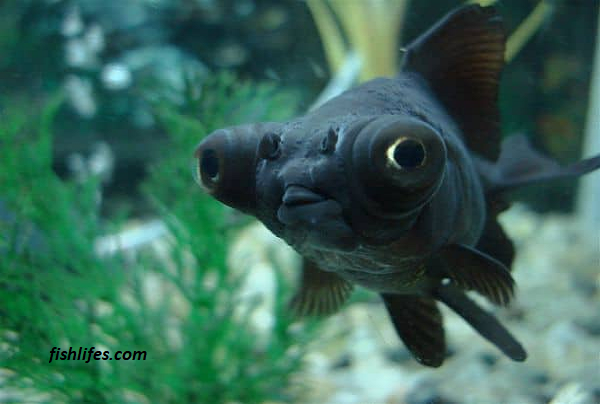The Checkerboard Wrasse, also known as the Marble Wrasse and Hortulanus Wrasse, is a beautiful fish found in reefs worldwide. This species is highly sought after for its attractive coloration and exciting behavior.
The Checkerboard Wrasse is a peaceful fish that can be kept in reef tanks with other compatible species. It requires special care due to its delicate nature and specific dietary requirements.
What is a Checkerboard Wrasse?
The Checkerboard wrasse is an iconic fish species native to the Indian Ocean, Red Sea, and Persian Gulf. It’s easily recognizable by its unique black-and-white coloration, which resembles a checkerboard pattern. This species has become increasingly popular in the aquarium trade due to its hardy nature and attractive appearance.
The Checkerboard wrasse mainly inhabits tropical reefs, feeding on benthic animals such as worms, crustaceans, and mollusks.
How big does the Checkerboard Wrasse get?
When fully grown, these tiny fish can measure up to 27 cm (11 inches) in length and weigh around 50 grams. Although they are small, their personality is anything but! Checkerboard wrasses are known for being active and playful when kept in an aquarium environment.
Is Checkerboard Wrasse Aggressive?
This species of wrasse has a semi-aggressive temperament, meaning they might become territorial with their kind or other fish of the same size and shape, especially those with similar coloration.
While they are generally peaceful towards smaller tank mates such as snails and shrimp, they may occasionally nip at larger ones like angelfish or clownfish if not housed in an adequately large environment or kept in low numbers.
Checkerboard Wrasse Behaviors
Like many other species of wrasse, checkerboard wrasses are highly social creatures that will interact with each other during the day.
They feed in groups, searching for prey amongst rocks and coral reefs. They also engage in courtship behaviors during mating season, such as chasing each other around or displaying attractive patterns on their bodies to entice mates.
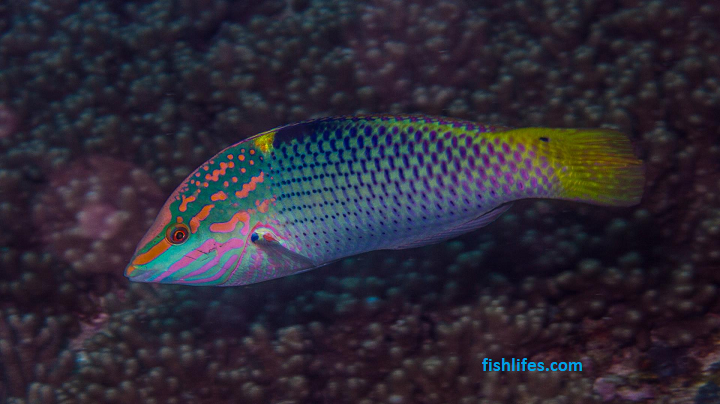
How long do Checkerboard Wrasses Live?
They are known to be one of the most long-living types of fish, with an average life span of 15 years. In captivity, they can live even longer than this if they are correctly cared for and given enough nutrients to sustain them.
One Look Care Guide
| Scientific name | Halichoeres hortulanus |
| Common name | Checkerboard wrasse Marble Wrasse Hortulanus Wrasse |
| Native to | Indo-Pacific ocean |
| Care Level | Moderate |
| Other water parameters | pH level: 8.1 -8.4 Hardness: 8-12 dKH Specific gravity: 1.020 to 1.025 |
| Preferred temperature | 72-78 degrees |
| Tank size | 125 gallons |
| Color | Green to white with a black checkerboard pattern |
| Type | Saltwater fish |
| Preferred salinity | 1.020 to 1.025 |
| Size | 27cm (11 inches) |
| Life Span | 15 years |
| Recommended tank mates | Large peaceful fishNo other wrasse species |
| Temperament | Semi-aggressive |
| Feeding frequency | Several times per day |
| Breeding | Has not bred in captivity, Egg layers |
Checkerboard Wrasse Care
Checkerboard wrasse care is essential for maintaining a healthy tank environment. This vibrant fish can bring much life and joy to any home aquarium, but they require special attention to ensure their health and well-being. Understanding the basics of checkerboard wrasse care is essential before bringing one into your home.
Checkerboard Wrasse Tank Size
When it comes to housing the Checkerboard Wrasse, size matters a lot. These fish require ample swimming space and should be kept in tanks no smaller than 125 gallons per individual specimen. They will feel comfortable enough to swim freely without fighting for territory or feeling overcrowded in such an environment.
How Many Should Checkerboard Wrasse Be Kept Together?
It is generally recommended that only one checkerboard wrasse be kept in an aquarium as they are territorial and can become aggressive with other species members if multiple individuals are present.
This aggression could lead to injury or even death in extreme cases, making it essential that only one individual per tank is kept.
Tank Setup
Before introducing this fish into its new home, there are some important considerations for setting up a tank for these marine creatures.
Substrate
Fine aragonite sand should be used as the substrate for a Marble Wrasse tank, as it will create the ideal environment for the fish.
This type of sand has excellent buffering capabilities and can help increase water hardness and maintain pH levels, which are essential factors in keeping this species healthy. The fine grain size allows the wrasse to quickly create its burrow, which it uses to hide during the day and sleep at night.
Decorations
Include plenty of decorations that provide enough space for the wrasse to hide, explore and swim freely. The best decorations are live rocks, coral skeletons, or artificial structures such as caves or tunnels.
These should be placed strategically throughout the tank so that several different levels of hiding places are dispersed around the tank’s perimeter.
Lighting
They prefer bright white light that mimics natural sunlight. Unique aquarium fixtures with full spectrum LED bulbs explicitly designed for saltwater aquariums can provide optimal brightness while limiting heat exposure.
Your lighting fixture must be positioned at least 8 inches above the water’s surface to prevent any potential burning or damage from direct contact with the lights.
Filtration
Filtration is one of the most critical aspects of setting up a Checkerboard Wrasse tank. The filter should provide plenty of flow while allowing enough swimming space for the wrasse.
It’s also essential to use a quality protein skimmer as this helps to remove organic waste from the water.

Tank Lid
As these fish are expert jumpers and escape artists, having something to secure the tank is ultimately necessary to keep them safe.
The lid should fit tightly against the edge of the tank, so there are no gaps through which they can swim out through.
In addition, the lid should be heavy enough so as not to be easily lifted by curious fins or heads pushing against it from the inside.
Water Quality Condition
Good water quality is essential for any marine environment, but especially for a checkerboard wrasse.
The water should be well-oxygenated, with a temperature range between 72-78°F and a pH level between 8-8.4, as these parameters provide the best living conditions for this species.
Additionally, at least every two weeks, frequent partial water changes are recommended to maintain a healthy tank environment for the checkerboard wrasse.
Checkerboard Wrasse Breeding
Despite their beauty and popularity, breeding Checkerboard Wrasse in an aquarium environment has proven to be quite challenging.
They are unique and fascinating hermaphroditic creature that has long been popular in saltwater aquariums.
This species of fish begins life as a female but can change sex depending on the social hierarchy in their environment.
Breeding checkerboard wrasse can be a rewarding experience for aquarists; however, it is important to understand the complexities of this behavior before attempting to do so.
They form monogamous pairs, and after mating, the male will remain with his partner until she lays eggs, which he will then fertilize. This activity usually occurs overnight but may also happen during daylight hours if there are few predators around.
Checkerboard Wrasse Male or Female Identification
When identifying a Checkerboard Wrasse, some distinct characteristics can help you determine whether you have a male or female.
The main distinguishing feature between male and female Checkerboard Wrasses is size. Adult males grow up to 10 inches long, while females tend to be much smaller, reaching only about 5 inches.
Aside from size, males also typically have more vivid colors than females when they reach adulthood.
Additionally, males will display aggressive behavior toward other fish if they are not the dominant ones in the tank. Conversely, females tend to be less territorial and are considered more peaceful community fish.
How to feed Checkerboard Wrasse?
To feed a Checkerboard Wrasse, you need to understand its dietary needs and how to provide nutrition without overfeeding or encouraging bad eating habits.
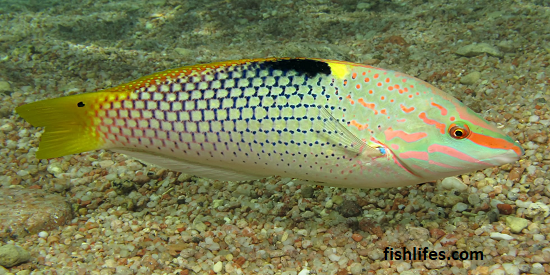
The most important part of feeding a Checkerboard Wrasse is offering a variety of foods. These fish are omnivores, so they should receive both plant matter and animal proteins in their diet.
A high-quality flake food provides essential vitamins and minerals, while various frozen types of meat like shrimp, mussels, squid, and brine shrimp offer plenty of protein sources.
What fish can live with Checkerboard Wrasse?
The best tankmates for a Checkerboard wrasse are other small, peaceful species that won’t disrupt its natural behavior.
Clownfish and Damselfish are two popular options that work well in medium-sized tanks. Tangs and Rabbitfish should also be compatible if they are introduced at the same time as the wrasse.
Small Gobies can also make good companions, but larger varieties may outcompete them for food and territory.
- Lionfish,
- lion head tangs
- triggerfish
- pufferfish.
Diseases
The Checkerboard wrasse is a hardy fish often found in marine aquariums.
Aquarists should familiarize themselves with the common diseases of this fish so they can recognize them quickly if needed and take proper steps to treat their Checkerboard wrasse.
Common diseases include hole-in-the-head, bacterial infections, parasites, skin flukes, and fungal infections. These conditions can be treated with antibiotics or other medications if caught early enough.
Related questions
Are They Rare?
No, Checkerboard Wrasses are not rare.
Can You Keep them In Reef Tanks?
No, they are not suitable for reef tanks. They are aggressive and territorial fish that need plenty of space to swim and hide. Additionally, they may eat small invertebrates in the tank, such as shrimp or crabs. For these reasons, keeping them in a species-only tank is best.
Conclusion
In conclusion, the Checkerboard Wrasse is an exciting and unique fish species. It has many distinguishing characteristics, such as its brightly colored markings, its tendency to swim in small groups or pairs, and its habit of using its tail to hide in the sand.
Its bold colors make it stand out among other fish species, making it an excellent choice for those looking for a vibrant addition to their tank. Although they are not always easy to come by, they are worth the effort if you can find one.
Read more: 17 Emperor Tetra Tank Mates For Your Beautiful Tank.

